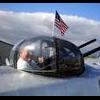Pireps on firewall forward HP + STC
-
Members Online
- ohdub
- katzhome
- PaulM
- GMBrown
- A64Pilot
- Utah20Gflyer
- PT20J
- UteM20F
- Ivan
- shawnd
- Skyland
- AviH
- 1980Mooney
- MoonFlyer68
- Geoff
- Greg Ellis
- IvanP
- PilotX
- dzeleski
- Kyle
- AF M20J
- pkellercfii
- Jason 1996 MSE
- jetdriven
- Hamburglar
- EricJ
- TangoTango
- DonMuncy
- Bolter
- Mellow_Mooney
- TCC
- Robm
- Guy123
- daytonabch04
- Yetti
- Wooly
- Pinecone


Recommended Posts
Join the conversation
You can post now and register later. If you have an account, sign in now to post with your account.